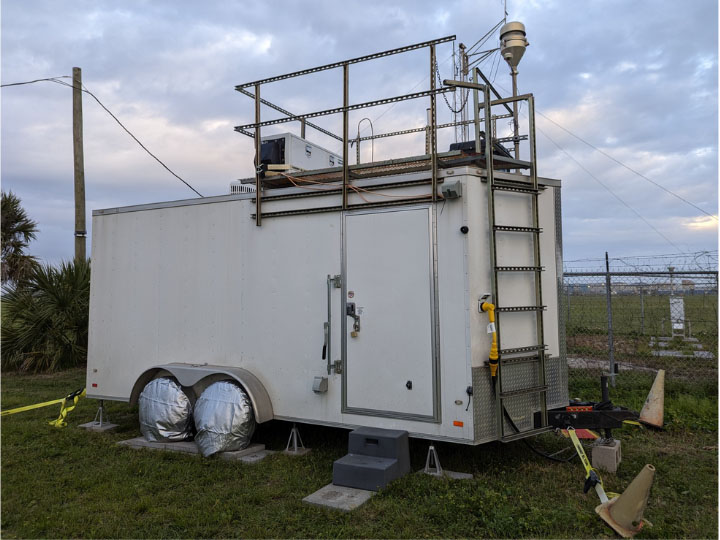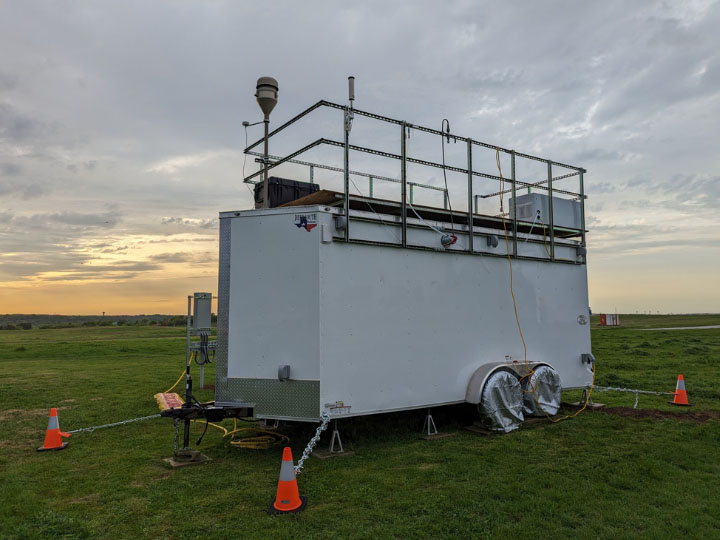Team to Study Properties of Particulate Matter to Determine Their Source and Impact on High Ozone
James Flynn, research associate professor at the University of Houston, has been awarded a $1.2 million research grant by the Texas Commission on Environmental Quality. The award will support Flynn and his team’s research project aimed at assessing the impacts of biomass burning, wind-blown dust pollutants and soot on air quality in Texas. Biomass burning can include wildfires, agricultural burning, prescribed burns, etc.

Flynn, principal investigator, and his team will primarily focus on urban air quality in major Texas cities including Houston, Dallas-Fort Worth and El Paso, conducting measurements during the 2023 Texas ozone season (roughly April 1 – October 31) using optical instruments.
“Smoke in particular has been linked to high ozone episodes,” said Flynn, a faculty member of the College of Natural Sciences and Mathematics’ Department of Earth and Atmospheric Sciences. “Along with the fine particulate matter (PM 2.5) in smoke, there are also gases in the smoke that form ozone. By looking at the optical properties of the fine particles, we can determine what is soot or dust or smoke, so we can then identify high ozone periods that have been impacted by smoke.”

Rebecca Sheesley, professor of environmental science at Baylor University, is co-investigator of the project, along with fellow Baylor professor, Sascha Usenko. She explains just how far pollutants can move from one place to another.
“Wildfire and dust pollutants can travel very long distances – across the US, across international borders and even across the ocean,” she said.
Recent examples include dark orange skies in New York City due to Canadian wildfires, hazy Houston days because of Saharan dust and blankets of dust in El Paso from desert windstorms.
The research group will use instruments including state-of-the-art tricolor absorption photometers and a nephelometer, which will enable the precise measurement of particulate matter and their optical properties. These instruments will be complemented by advanced air quality monitoring equipment, including trace gas detectors and high-volume filter samplers.
“Filter samples from particles can be analyzed for tracers of indicators of biomass burning,” Flynn said. “Certain filters will be analyzed using radiocarbon dating. This method can tell us the difference between carbon that comes from biomass burning and carbon that’s from fossil fuel burning, like that from power plants and vehicles.”
High Ozone Levels: Local Causes or Not?
Their work could provide clarity to policy makers as to the cause of high ozone. If ozone is coming in with smoke plumes from biomass burning from another state, then it’s not being locally generated; it’s not coming from Houston activity, whether it’s people driving cars, power plants or refineries.
The research team will also collect data on meteorological parameters and carbon monoxide levels to gain a comprehensive understanding of air quality dynamics.
The team will have three monitoring sites in the Houston area: one at the Galveston airport, another in Aldine and one in Liberty County. In Dallas-Fort Worth, the team will have sites at a northwest Fort Worth TCEQ site and the Arlington Municipal Airport. In El Paso, the team is working with the University of Texas at El Paso to reestablish a monitoring site. Flynn’s previous air quality work in El Paso was conducted in conjunction with UT El Paso.
- Rebeca Hawley, University Media Relations